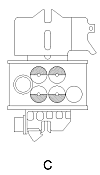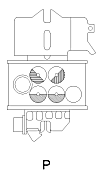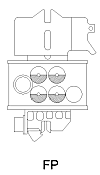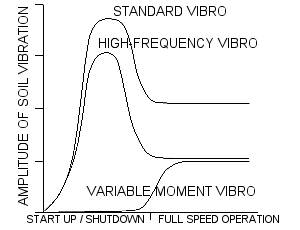What is a Variable Moment Driver/Extractor and How Does it Work?
     |
It is a vibratory driver/extractor that has no amplitude, or moment (energy), when the hammer is started and stopped.
The start up and shut off of a standard driver/extractor has the highest impact on the surrounding soil. In the time that a standard driver/extractor takes to come up to full vibration speed, the amplitude (or size) of the soil vibration is three times larger than when the driver/extractor is at its full vibration speed. The same is true for when it is turned off and is a direct example of resonant vibration.
Restrictions such as:
What is Resonant Vibration?In order to understand resonant vibration, some basic terms used in describing the interaction of vibration in soil and structure need to be outlined. Particle velocity is a name given to the measurement of amplitude size over time created by the vibration speed. (Represented in the driver/extractor comparison graph above) This mathematically described as inches per second (in/sec). The slower the hertz (VPM) the more affect on soil and structure through resonance. 10htz (600 VPM) and below soil and structure start amplifying the particle velocity as the vibration passes through soil and structure and increase this in/sec size. This is why the start up and shut down of a standard driver/extractor can make the crane boom bounce. The suppressor amplifies the vibration during this slower frequency time. This affect led to APE’s patented two-stage suppressor, which minimizes the vibration by absorbing these slower frequency waves with double the line pull capacity. This same amplification takes place in soil and structures. Seismic metering devices are commonly placed on structures around jobsites to monitor the PPV over the day’s work to protect against potential damage claims. High frequency and variable moment driver/extractors are used when the potential for structural damage is elevated. |








 This graph shows the
comparison of particle velocities for three driver/extractor types. Standard with a vibration speed of 1,600 VPM, high frequency operates
at 2,100 VPM as does variable moment driver/extractors. Vibration sensitive jobsites are the primary places variable moment driver/extractors are used.
This graph shows the
comparison of particle velocities for three driver/extractor types. Standard with a vibration speed of 1,600 VPM, high frequency operates
at 2,100 VPM as does variable moment driver/extractors. Vibration sensitive jobsites are the primary places variable moment driver/extractors are used.